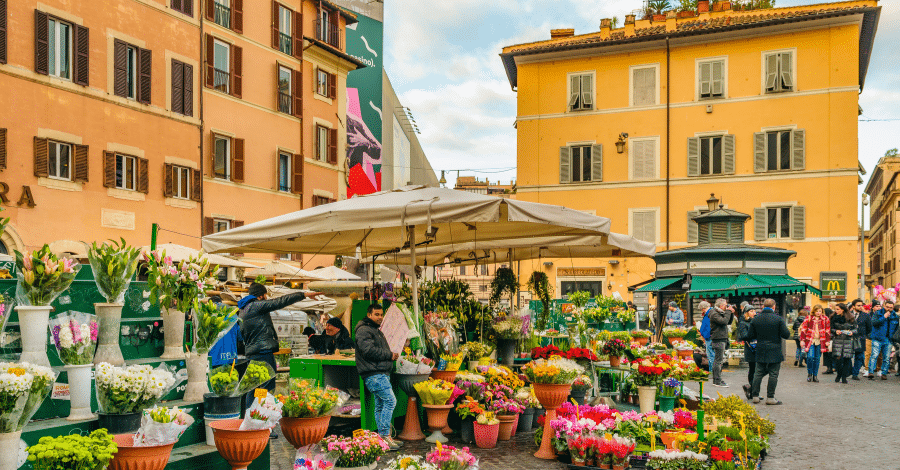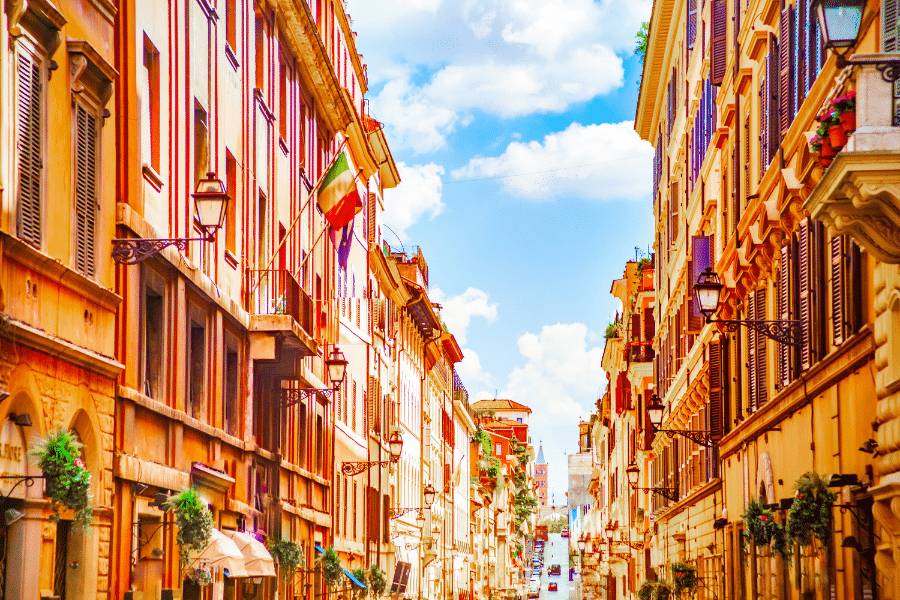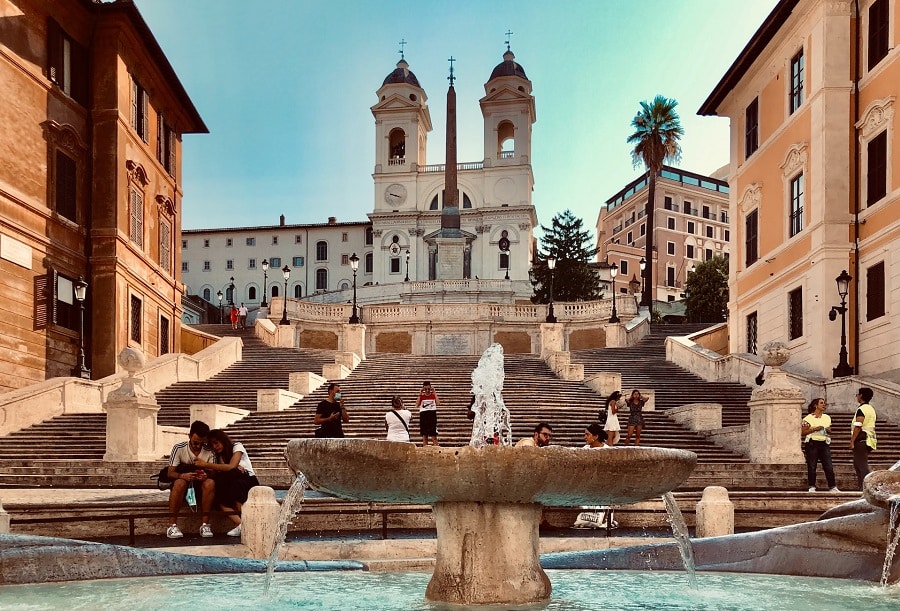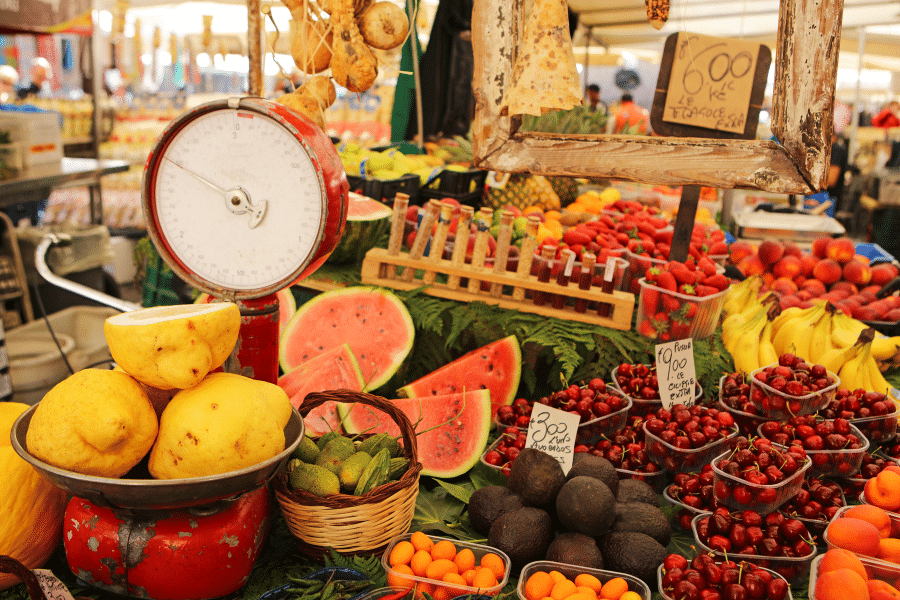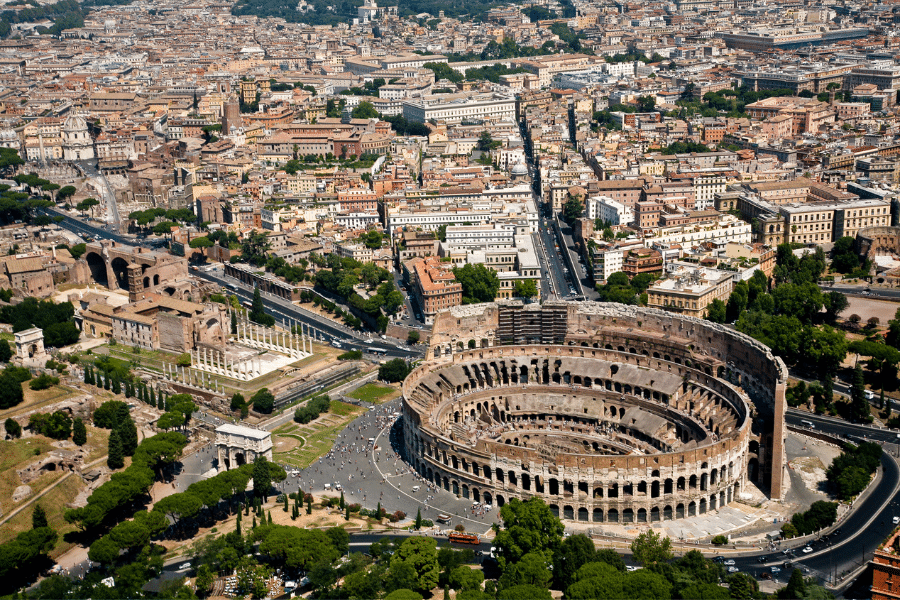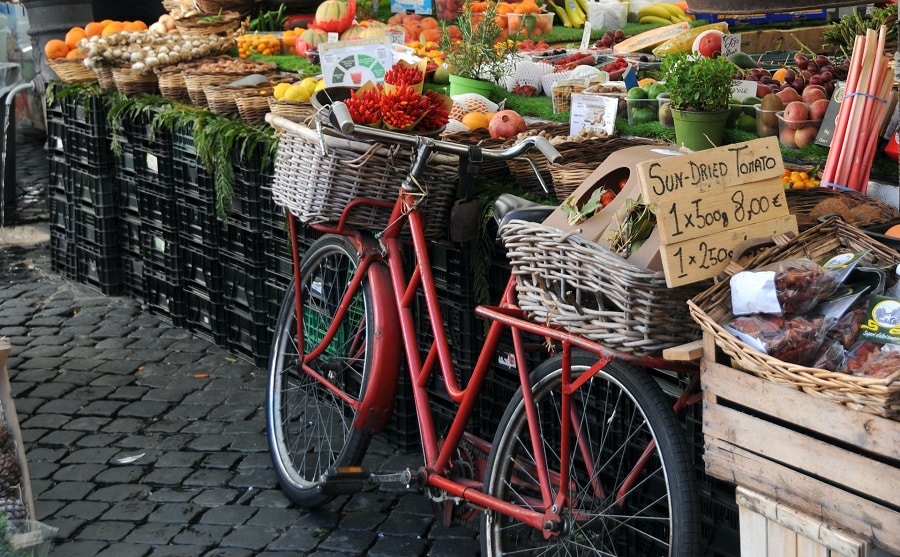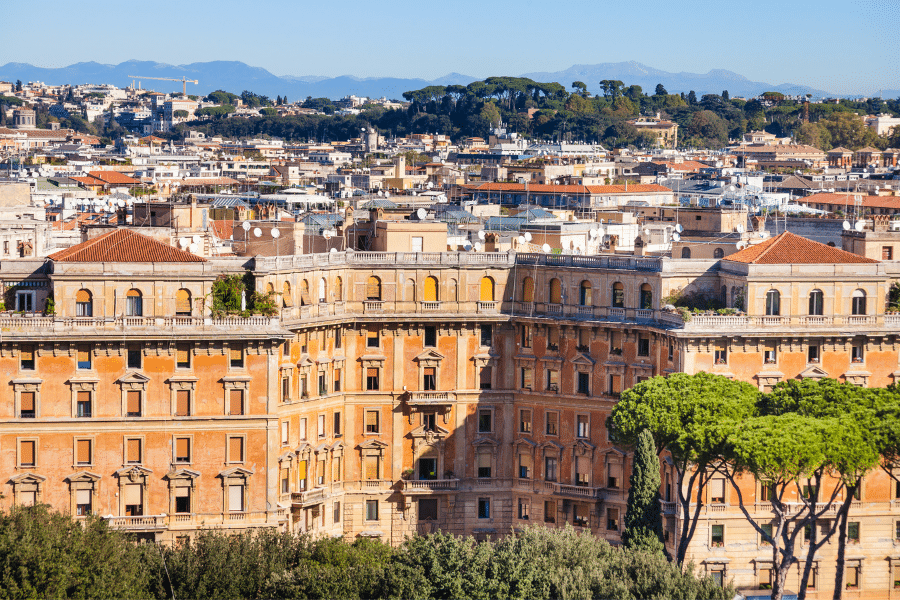Rome is a special place to live in, and there are so many reasons to move here. From the fantastic weather, rich history and architecture, and events happening almost daily, it’s easy to fall in love with the city. It’s simultaneously one of the most beautiful yet dirty places I’ve ever been, somehow adding to the charm.
After almost two years of growing pains and situations that left me baffled, here are some of the things you should know about living in Rome.
Choosing the best neighborhoods
Rome is a huge place, technically spanning almost 500 square miles. But the city center itself is significantly smaller. If you’re looking into an apartment, you may not know where to begin your search.
If you’re living in the city, you don’t want to rely on buses to get around majorly. The first neighborhoods you should start looking in are near major train stations or along the two metro lines.
Here are some of my suggestions for neighborhoods:
- Pigneto/Monti – Great neighborhoods for anyone who likes nightlife and events.
- Monteverde – Great for families looking for a quieter place a bit more off the beaten path but a quick 20-minute bus ride to the city.
- Pyramide/Testaccio/Ostiense – A good multi-purpose area, close to a major train station and metro, while being in one of the most well-known neighborhoods for food. However, this is one of the more expensive areas.
- Garbatella – Another well-connected neighborhood with a ton of great restaurants, but cheaper than Testaccio.
Of course, this is just a handful of great neighborhoods that will give you a general idea of what to look for, and there are still a lot of other great areas consider. Check out this curated list of the best neighborhoods in Rome to find one that suits your needs.
Making friends in Rome
Outside of the mundane, practical stuff like moving or getting paperwork together, making friends is the most challenging aspect of moving to a new country. This gets especially harder, too, as you get older.
The hardest part for people like me is pushing myself out of my comfort zone. I’m already dealing with tons of uncomfortable situations, like struggling with the language or just being generally confused about tons of different things. Going out and meeting new people just compounds this problem. On the other hand, staying at home and not being active gets lonely.
As a major city and multi-cultural hub of Italy, you’ll have no problem finding a lot of things to do that are going on around the city and a lot of friendly foreigners that can help you find the friends you need.
The first step you should take is to join one of the many expat WhatsApp groups. See what events are going on around town and sign up for some socials.
From there, you can find other, more niche groups. After over a year in the city, I’m in a hiking, a board games, two running, and multiple soccer groups. Finding people who have similar interests to you may be challenging at first, but don’t fret; they exist in this city!
Grocery stores in Rome
Grocery stores in Rome are similarly designed to ones throughout the world. But there are a few things I’ve noticed that are cultural differences that you should be aware of.
First off, if you’re touching any fresh produce, you should wear the plastic gloves they provide. It’s wasteful, but I think this has been a big thing ever since COVID-19. And it makes sense. You don’t want other people touching your food. I just grab the produce bag (which is biodegradable, by the way) and test out the produce without wasting plastic gloves.
You may also be used to weighing produce at the counter, but that’s not the case in Italy and throughout Europe. In the produce section, there will be machines that weigh your produce and print up a little sticky ticket with a barcode.
My first trip to the counter was a wake-up call that I’ll never forget. The cashier politely told me I needed to weigh my bananas and asked if I wanted to do it before checking out. The audible groans from the old woman behind me in line left me in a sweat, and so I left the store without my prized bananas.
The dreaded Roman public transportation
Almost every one of my articles about Rome goes into great depth about how inconsistent the public transportation in the city is. It’s already prominently in this one, as I suggest you choose your home around solid public transportation areas.
Relying on buses, on the other hand, is much more hit-and-miss. We often find ourselves catching the bus right on time or spending double the time it should take to get to our destination.
Biking is relatively safe, though it can be quite scary knowing how crazy the drivers are in the city. But it is one of the best ways to get around town, avoid traffic, and get places in consistent time.
Bike and scooter rentals are a great way to get around, especially in a pinch. My preferred late-night transportation home is a Dott bike. They’re scattered throughout the city and are electric, so they make biking up the hills of Rome much easier. On top of this, they have a “2 Rides Pass” that provides two thirty-minute rides that is, at the time of writing, €3.49. To me, this is worth it if you take a single ride.
You can also take a Free-Now, the Roman Uber (Uber is available, but we haven’t had much luck), or a taxi ride. These are all inexpensive ways to get around in a pinch.
Healthcare in Rome
Compared to the US, healthcare in Italy is inexpensive, but you’ll need to have some kind of international health insurance to cover the majority of appointments and treatments.
The public hospitals are required to treat anyone who comes in, but you may have a tough time getting in to see doctors without appointments. Additionally, most of the staff won’t speak English.
For foreigners, going to a private hospital might be a better option. Though it is more expensive than public hospitals, most of the staff will speak English, and they’re a bit more organized.
However, for the appointments I did have, there was still waiting and confusion. Since the doctors are more freelancers at the hospital I go to, they don’t have assigned rooms. I’ll be sent to several places before finding the place I need to be and sit in the busy hallway, not sure if I’m in the right place.
So, I’ll always have to ask, double-check, knock on doors, and put myself in uncomfortable situations to get the necessary information.
You can do more with less in Rome
Shopping is a huge pastime for Romans and tourists alike, but if you’re on a budget, you can still get your shopping kick with much less money. Besides the already low cost of living in Rome, there are tons of vintage shops littered throughout the city.
But even better than that, Rome is famous for its large open-air markets that happen monthly, weekly, and sometimes daily. Portaportese is the most popular and most renowned market in the city. Every Sunday, hundreds of shops their stalls for anything you might be looking for or surprising gems.
From clothes, jewelry, books, antiques, or even household items, you can find anything you need at this market. The best part is the shops are remarkably inexpensive, and you can barter prices down, too.
Additionally, there are farmers’ markets throughout the city that have similar hours. In Monti, Campagna Amica Market opens every weekend, selling fresh, local produce, daily-baked bread, dry-aged meats, and even fresh-cooked lunch. San Giovanni Di Dio in Monteverde has a daily market offering similar items, too.
Whatever neighborhood you live in, check with your neighbors or look around the area for the markets. You’ll be able to save a significant amount of money by getting most of your groceries from these local markets.
Package delivery inconsistencies
Italian stores are a little more old-school. Of course, you can still find tons of household items and supermarkets, but the city still relies a lot on specified shops for you to get items from different categories.
Getting furniture was one of the hardest things we had to do when moving into the city, but this is probably down to needing to learn the language and know about local shops.
We ended up ordering a ton of furniture from IKEA, which is on the outskirts of town, to be delivered to us. We were given a range of three days the delivery was supposed to come, and it ended up showing up outside of the times the company provided.
After, we ordered a second round of items, a comforter and some sheets, that were, again, delivered within the literal hour we left to walk the dog. Instead of returning later, they wanted us to go to another part of town to pick up the item.
Though many of our friends have had fewer issues with delivery services, it seems every package we’ve had sent to our place has had some kind of problem. I’ve had to go to Post Italiane centers quite far from our home to pick up packages from shops and sent from our family in the States.

